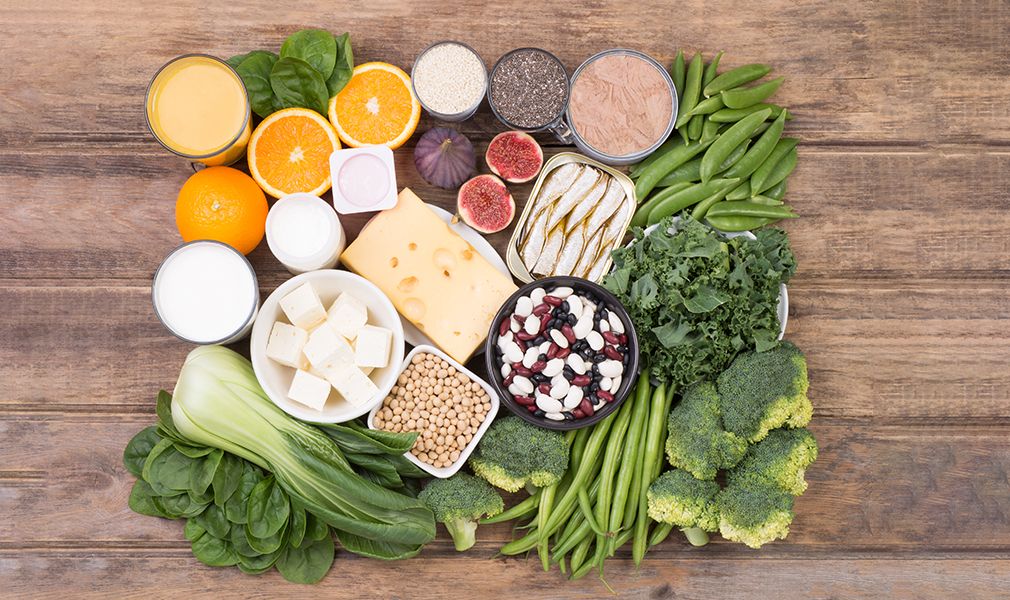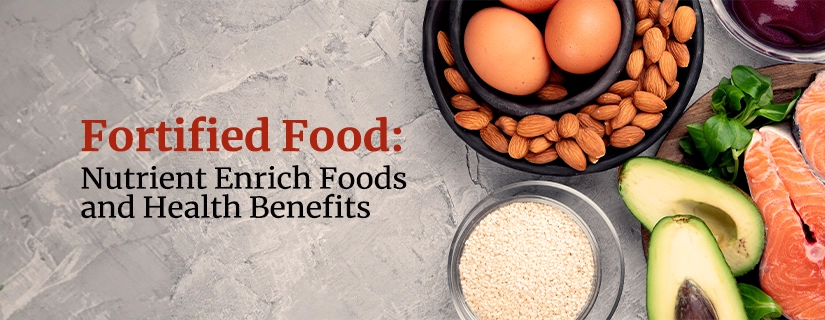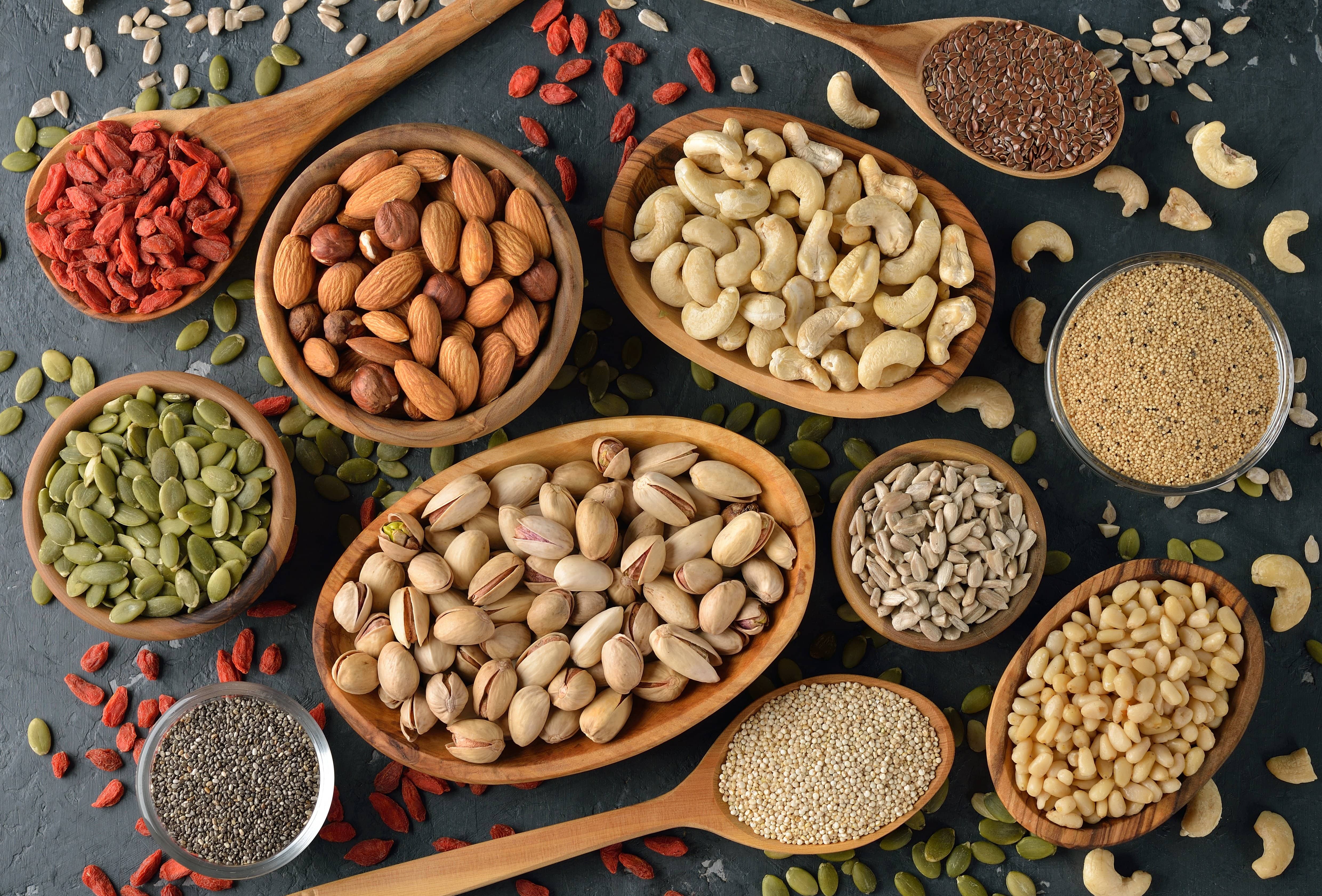
Top 10 Calcium-Rich Foods, Calcium is an essential mineral that plays a vital role in maintaining strong bones and teeth, supporting muscle function, and ensuring proper nerve signaling. While dairy products are often touted as the primary source of calcium, there are numerous other foods rich in this essential nutrient. In this article, we delve into the top 10 calcium-rich foods that can help you meet your daily requirements and support overall health.
Read More: How to Order Food in Train 2024
1. Dairy Products

Milk
Milk is a well-known source of calcium, providing about 300 milligrams of calcium per cup. It is easily accessible and comes in various forms, including whole, skim, and flavored milk. Incorporating milk into your diet can significantly contribute to your daily calcium intake.
Cheese
Cheese, especially hard cheeses like Parmesan and cheddar, is incredibly rich in calcium. A single ounce of Parmesan cheese contains approximately 331 milligrams of calcium. Besides its calcium content, cheese also provides protein and other essential nutrients.
Yogurt
Yogurt is another excellent dairy source of calcium. A typical serving of plain yogurt can provide around 300-400 milligrams of calcium. Greek yogurt, known for its higher protein content, also offers a substantial amount of calcium.
2. Leafy Green Vegetables

Kale
Kale is a nutritional powerhouse, offering a good amount of calcium. One cup of cooked kale provides about 94 milligrams of calcium. Additionally, kale is rich in vitamins A, C, and K, making it a valuable addition to a balanced diet.
Spinach
Spinach is another leafy green vegetable that is high in calcium. One cup of cooked spinach contains approximately 245 milligrams of calcium. Spinach also offers a wealth of other nutrients, including iron and magnesium.
Collard Greens
Collard greens are a staple in many Southern cuisines and are packed with calcium. One cup of cooked collard greens provides around 266 milligrams of calcium. They are also high in vitamins A, C, and K.
3. Fortified Foods

Fortified Orange Juice
Fortified orange juice is a popular non-dairy source of calcium. One cup can provide about 300 milligrams of calcium. This makes it an excellent option for those who are lactose intolerant or prefer plant-based diets.
Fortified Plant Milks
Plant milks, such as almond, soy, and rice milk, are often fortified with calcium to match or exceed the calcium content of cow’s milk. One cup of fortified almond milk, for example, can contain up to 450 milligrams of calcium.
Fortified Cereals
Many breakfast cereals are fortified with calcium and other essential vitamins and minerals. Depending on the brand and serving size, these cereals can provide between 100 to 1000 milligrams of calcium per serving.
4. Fish

Sardines
Sardines are small, oily fish that are incredibly rich in calcium. A 3-ounce serving of canned sardines with bones contains about 325 milligrams of calcium. They are also an excellent source of omega-3 fatty acids and vitamin D, which aids calcium absorption.
Salmon
Salmon, especially canned with bones, is a great source of calcium. A 3-ounce serving of canned salmon with bones provides around 180 milligrams of calcium. Salmon is also renowned for its high content of heart-healthy omega-3 fatty acids.
5. Nuts and Seeds

Almonds
Almonds are among the highest in calcium of all nuts. One ounce of almonds (about 22 nuts) contains approximately 76 milligrams of calcium. They also provide healthy fats, fiber, and protein, making them a nutritious snack.
Chia Seeds
Chia seeds are tiny nutritional powerhouses that are packed with calcium. One ounce (about 2 tablespoons) of chia seeds provides 179 milligrams of calcium. They can be easily added to smoothies, yogurt, or salads.
Sesame Seeds
Sesame seeds are rich in calcium, with one tablespoon providing about 88 milligrams of calcium. Tahini, a paste made from sesame seeds, is also a great way to incorporate sesame seeds into your diet.
6. Legumes

White Beans
White beans are an excellent source of calcium, with one cup of cooked white beans providing about 161 milligrams of calcium. They are also rich in fiber and protein, making them a nutritious addition to any meal.
Chickpeas
Chickpeas, or garbanzo beans, are another legume that is high in calcium. One cup of cooked chickpeas contains approximately 80 milligrams of calcium. They are also a versatile ingredient that can be used in a variety of dishes.
Black-eyed Peas
Black-eyed peas are a good source of calcium, with one cup of cooked black-eyed peas providing about 211 milligrams of calcium. They are also rich in folate and potassium.
7. Tofu
:max_bytes(150000):strip_icc()/Simply-Recipes-Guide-to-Tofu-LEAD-03-b061d09a0d434bb38ddac0c7017829ab.jpg)
Tofu, especially when made with calcium sulfate, is a great plant-based source of calcium. Half a cup of firm tofu can provide up to 861 milligrams of calcium. Tofu is also a versatile ingredient that can be used in a variety of dishes, from stir-fries to smoothies.
8. Figs

Figs, both fresh and dried, are rich in calcium. A half-cup of dried figs provides about 120 milligrams of calcium. They are also high in fiber and antioxidants, making them a healthy and delicious snack.
9. Rhubarb

Rhubarb is a unique vegetable that is rich in calcium. One cup of cooked rhubarb provides about 348 milligrams of calcium. It is also high in fiber and vitamin K.
10. Amaranth

Amaranth is an ancient grain that is rich in calcium. One cup of cooked amaranth provides about 116 milligrams of calcium. It is also a good source of protein and fiber, making it a nutritious addition to your diet.
Incorporating these calcium-rich foods into your diet can help ensure you meet your daily calcium needs and support overall health. Whether you prefer dairy products, leafy greens, fortified foods, fish, nuts, seeds, legumes, tofu, figs, rhubarb, or amaranth, there are plenty of options to choose from.
Case Study: Increasing Dietary Calcium Intake with Top 10 Calcium-Rich Foods
Calcium is a crucial mineral for maintaining bone health, muscle function, and overall physiological well-being. Despite its importance, many individuals fail to meet their daily calcium requirements, leading to potential health issues such as osteoporosis and muscle weakness. This case study examines the effectiveness of incorporating the top 10 calcium-rich foods into the diet of a 45-year-old woman with a history of low calcium intake and early signs of osteoporosis.
Background
The subject of this case study is Jane, a 45-year-old woman with a sedentary lifestyle and a history of poor dietary habits. Her diet lacked sufficient calcium-rich foods, and she often consumed processed foods with low nutritional value. Jane was diagnosed with early signs of osteoporosis during a routine health check-up, prompting her healthcare provider to recommend increasing her calcium intake to improve bone health.
Objective
The primary objective of this case study is to evaluate the impact of incorporating the top 10 calcium-rich foods into Jane’s diet over a six-month period. The goal is to increase her calcium intake to meet the recommended daily allowance (RDA) of 1000-1200 milligrams for women in her age group.
Methodology
Dietary Plan
A comprehensive dietary plan was developed for Jane, focusing on the inclusion of the following calcium-rich foods:
- Dairy Products: Milk, cheese, and yogurt
- Leafy Green Vegetables: Kale, spinach, and collard greens
- Fortified Foods: Fortified orange juice, fortified plant milks, and fortified cereals
- Fish: Sardines and salmon
- Nuts and Seeds: Almonds, chia seeds, and sesame seeds
- Legumes: White beans, chickpeas, and black-eyed peas
- Tofu: Made with calcium sulfate
- Figs: Fresh and dried
- Rhubarb: Cooked
- Amaranth: Cooked
Monitoring and Evaluation
Jane’s dietary intake was monitored through a food diary, and her calcium intake was calculated weekly. Bone density scans were conducted at the beginning of the study and after six months to evaluate changes in bone health.
Results
Dietary Compliance
Jane adhered to the dietary plan with a compliance rate of 90%. She found the variety of foods enjoyable and easy to incorporate into her meals. Her favorite calcium-rich foods were Greek yogurt, fortified almond milk, and kale salads.
Calcium Intake
Jane’s average daily calcium intake increased from approximately 500 milligrams to 1200 milligrams, meeting the RDA for her age group. The inclusion of fortified foods and dairy products significantly contributed to this increase.
Bone Health Improvement
The bone density scans revealed a notable improvement in Jane’s bone health. The initial scan showed early signs of osteoporosis, while the follow-up scan after six months indicated a stabilization of bone density, suggesting a positive response to the increased calcium intake.
Overall Health and Well-being
In addition to improved bone health, Jane reported enhanced overall well-being. She experienced fewer muscle cramps and felt more energetic. The inclusion of a variety of nutritious foods also improved her digestion and reduced her reliance on processed foods.
Discussion
The case study demonstrates the effectiveness of incorporating the top 10 calcium-rich foods into the diet to increase calcium intake and improve bone health. Jane’s experience highlights several key points:
Variety and Accessibility
The wide range of calcium-rich foods provided Jane with numerous options to suit her preferences and dietary habits. This variety made it easier for her to maintain compliance with the dietary plan.
Importance of Fortified Foods
Fortified foods, such as fortified plant milks and cereals, played a crucial role in helping Jane meet her calcium needs, especially since she was initially not a fan of dairy products. These foods offer a convenient and effective way to boost calcium intake.
Long-Term Benefits
While the primary focus was on increasing calcium intake, the dietary changes also led to overall improvements in Jane’s health. This underscores the importance of a balanced diet rich in essential nutrients for long-term well-being.
Conclusion
This case study highlights the positive impact of a well-planned diet rich in calcium on bone health and overall well-being. By incorporating a variety of calcium-rich foods, Jane was able to meet her calcium needs, stabilize her bone density, and improve her overall health. This approach can be applied to individuals with similar dietary deficiencies, emphasizing the importance of dietary modifications in managing and preventing health issues related to calcium deficiency.


